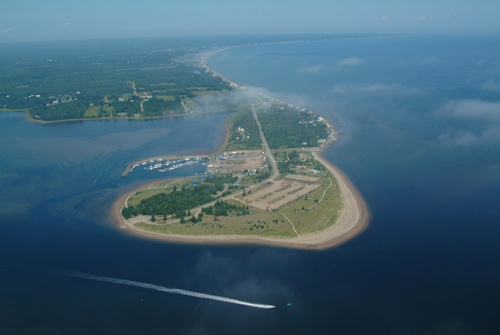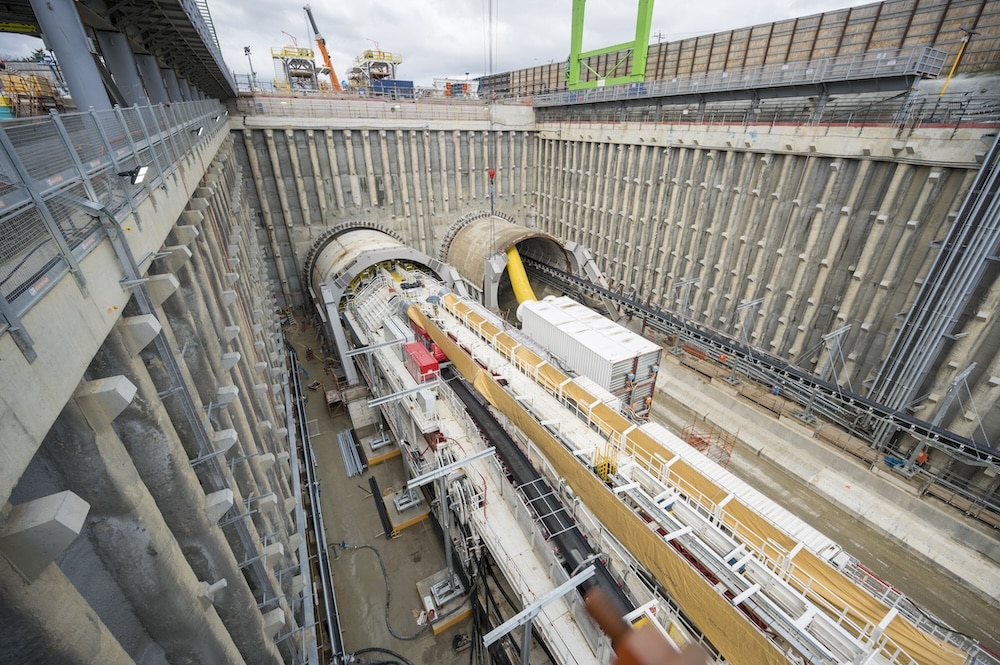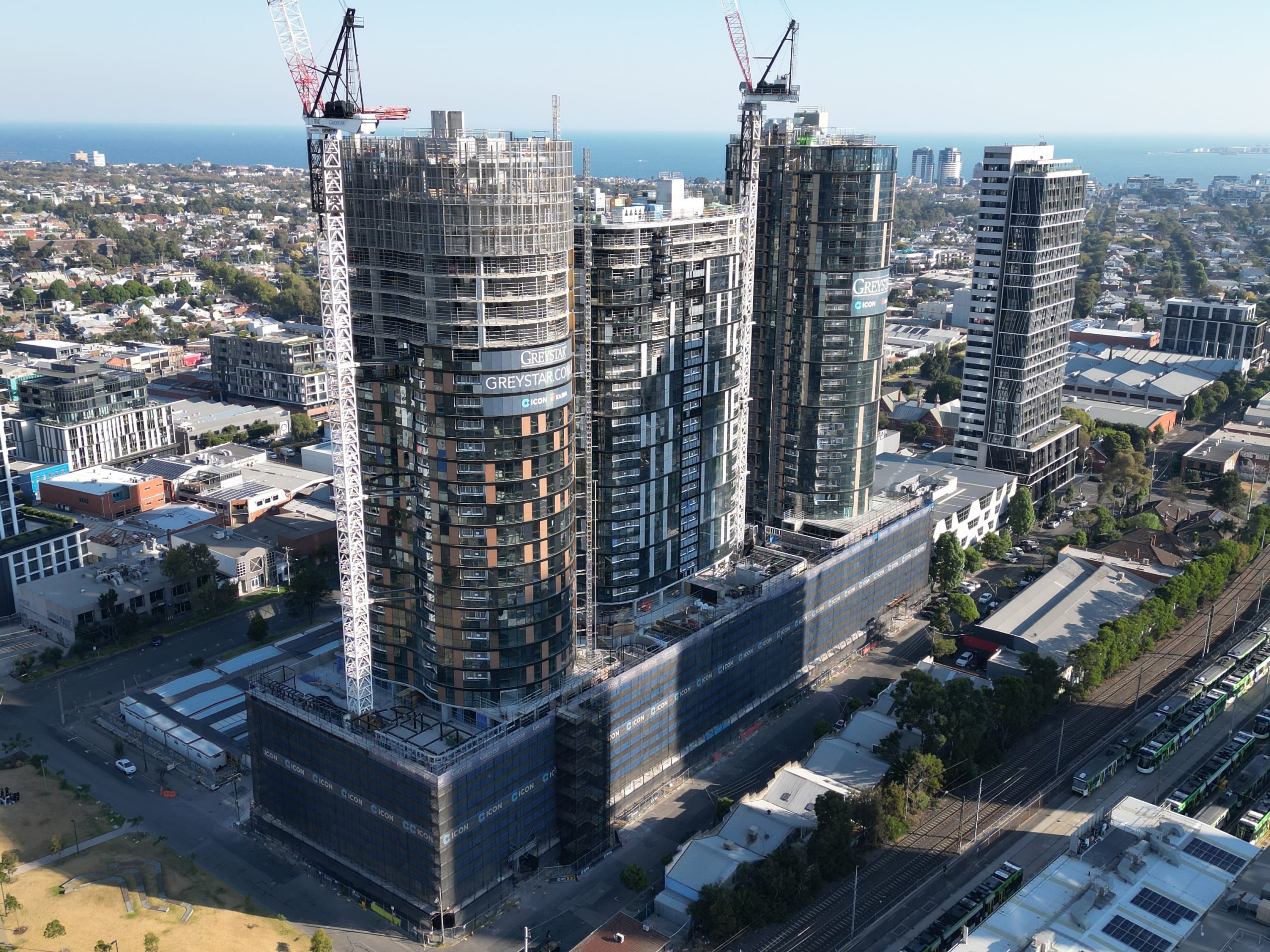
Tucked into a corner of Chaleur Bay in north-eastern New Brunswick (NB), Bathurst claims to be the only truly bilingual municipality in Canada, with exactly half its 12,000 population claiming English as their first language, half French, and most of them comfortable with either. The body of water to the north may have been named with irony – this is northern Canada and much of the year chaleur is in short supply. City Manager and Treasurer André Doucet talking to us in mid-March felt ready for spring to come: “We just had a storm that left 50 centimetres of snow – and over a single weekend in January we had 85 centimetres – it must be climate change!”
However even cold weather is good for the local economy. Bathurst is a mecca for snowboarders and their local club with 800 members is the largest in the province. 4-wheel drive enthusiasts also love the snow though they come all year round. Between them, and together with people who take quieter enjoyment from the dramatic beauty of the NB north coast, they bring in a lot of revenue to local businesses and hotels.
Doucet wishes the secret of the region wasn't quite so well-kept, and that he had more resources to promote its many attractions. “A brochure is ok as far as it goes but we need to have more stuff out there on Facebook, Twitter and YouTube.” Stuff like the excellent series of YouTube shorts that you can find under Experience Bathurst in which French speaking Monique and English speaking Meredith try out just about all the available activities from luxury hotels to rock climbing.
The city's biggest revenue source is from property taxes. NB is unique in Canada in not collecting these on a local authority basis – instead the provincial administration in Fredericton assesses and collects the taxes and distributes them to the municipalities in twelve monthly portions. The loss of control over assessment is more than compensated for by not having to do all the admin, and an added advantage is the removal of any local pressure on City Hall.
The glory days of mining, which used to sustain the area, finally petered out last year with the closure of Xstrata's Brunswick mine, which has had several owners following its opening in 1964 and in its heyday was one of the world's largest and most profitable zinc mines. At the peak of production it employed more than 2,000 people, and still supported 800 at the time of closure in well paid jobs that are proving hard to replace, says Doucet. The city is now pinning its hopes for a revival in regional mining on local company Trevali, which owns the Caribou mine and mill, Halfmile mine and Stratmat polymetallic deposit all located in the Bathurst Mining Camp of northern New Brunswick.
Trevali plans to open three new lead/zinc operations at its Caribou Mill complex just 20 miles to the west of Bathurst in the later part of this year or early in 2015. This could create up to 300 local jobs and bring back some of the skilled miners that have left the region to work in other parts of Canada, Doucet points out. “These guys have been mining all their lives: their homes and families are here but they have to go where the work is – they would definitely rather work in NB though!”
Nevertheless the city needs to address unemployment as a matter of urgency. Northern NB has always been an area of high unemployment, with many seasonal forestry and fishery workers in the Acadian Peninsula. “A few years ago we hired an economic development officer to attract businesses to the city, to bring new business in and make sure the existing businesses keep operating and maintain the existing jobs. We don't want to lose what we already have!” The city works in coordination with the Province of NB's economic development department, he says, however it is hard to compete with cities like Dieppe which are close to the Greater Moncton International Airport.
This may entice high tech firms, but there are some local success stories in other industries. Metal fabrication is one of Bathurst's strengths, but one of the city's strongest businesses is Industrial Rubber Company (IRC). When German defence contractor FFG was awarded a $100 million contract for the conversion of Canada's Leopard 2 tanks into armoured engineering vehicles (AEVs) it selected IRC, which has vast experience manufacturing parts for military vehicles, as its main Canadian partner on the project. As one government minister commented when the deal was announced in July 2012: “This agreement is excellent news because it will create a number of high value jobs at IRC and will generate economic spin-offs that will benefit all of Atlantic Canada.”
Success stories like these, where high value jobs are brought into the city, are music to André Doucet's ears. He is no less happy to note that some new businesses are being attracted to the area. Regulation changes in Canada on April 1 allow licensed producers to grow medical marijuana on a commercial scale. Health Canada estimates the North American market should top $5 billion-plus by 2016. That being so the decision by British Columbia company International Herbs to buy a former textile mill at Atholville just 50 miles west of Bathurst could be significant for the entire region. Just a quarter of the 400,000 square foot facility will be used initially, allowing plenty of scope for expansion, however it will bring 200 new jobs to the area from the start, says Doucet.
All this is good news for Bathurst, and the city is doing its utmost to push economic development. That should not eclipse the best practice it has demonstrated in more mundane activities. Doucet is particularly proud of its green credentials. “We have invested to make our buildings more energy efficient. We have a civic centre with two ice rinks that was a big energy consumer, and with all the retrofit we did in that building we are saving $55,000 a year in power!” This was achieved through simple measures like changing to a more energy-efficient boiler and installing low energy lighting – but it served as a benchmark for other municipalities and contributed to Bathurst's recognition as one of the Partners for Climate Protection within the Federation of Canadian Municipalities (FCM), which represents more than 2,000 authorities, only 230 of which have been recognised throughout Canada, and in NB only 17.
It is a very rigorous programme that requires five 'milestones' to be passed – Bathurst passed its final milestone last year. The city has shown real leadership here – for example switching all the municipal lighting it controls over to LED. Most of the street lighting infrastructure is owned by company NB Power, and the utility is now following suit.
Another huge achievement came through smart thinking. Bathurst has a network of more than 100 kilometres of roads to maintain. This is a challenge, Doucet admits, but the Canadian government has announced that its gas tax fund (GTF) that provides NB with over $225 million a year (Bathurst gets around a million of that). That is a great help but then the municipality was faced with a new requirement to spend $40 million over the next ten years to meet new government wastewater treatment standards. GTF can be spent on wastewater treatment but there was no way it would cover that level of investment. “We needed a plan of action and decided to use the gas tax 100 percent on road construction and repairs – the high investment on water treatment was called for because of the high risk category we fell into but by combining the roads programme with water and sewage replacement below street level the risk assessment came down and the investment to a more manageable $4 million.”
Expect to hear more about this city, then. “Some people said Bathurst would be a ghost town after the mine closed but that has not happened,” says André Doucet proudly. With him to fight its corner, aided by the likes of the lively Monique and Meredith, Bathurst will soon be booming again.
Written by John O’Hanlon, research by Stuart Platt



 CityBathurst-Americas-Infra-Jun14-Bro-s.pdf
CityBathurst-Americas-Infra-Jun14-Bro-s.pdf









